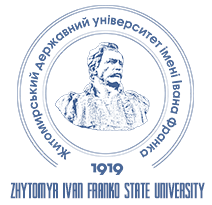CREATIVE INDIVIDUALITY OF THE PUPILS OF OUT-OF-SCHOOL EDUCATION INSTITUTIONS OF ARTISTIC-AESTHETIC DIRECTION: ESSENCE AND STRUCTURE
DOI:
https://doi.org/10.35433/pedagogy.4(107).2021.5-13Keywords:
creative individuality, pupils, out-of-school education institutions, artistic-aesthetic activity, visual and decorative-applied artsAbstract
The article reveals the essence and structure of creative individuality of the pupils of the out-of-school education institutions of artistic-aesthetic direction. Formation of the specified phenomenon is considered through the prism of motivational, cognitive, perceptual and interactive components and the following clusters of the pupil’s competences: value-motivational, cognitive-potential, creative-emotional, reflexive-activity. Value-motivational cluster characterizes the level of pupil’s motivation. It is determined by awareness of the importance of the creative component of artistic-aesthetic activity, understanding the need for creative self-development, efforts to improve one’s creative potential, interest in various disciplines of art education. Cognitive-potential cluster is manifested as a developed artistic-aesthetic thesaurus, variability of creative individuality in different types of artistic-aesthetic activities, the direction of creative self-development. Creative-emotional cluster covers such qualities of the personality of the pupil of the out-of-school education institution as initiative, independence, risk-taking, emotionality, etc. With the help of reflexive-activity cluster can be measured the ability to reflections in the creative process, the ability to manage one’s mental state, overcoming internal and external obstacles, purposefulness and criticism in performing creative tasks. It is argued that creative individuality of the pupil of the out-of-school education institution is a complex and multi-aspect quality, which is formed in a multi-vector educational process, which focuses on individual creative development of pupils, and effectiveness of this process depends on providing a number of pedagogical conditions, in particular: development and application in the process of teaching the pupils of the out-of-school education institutions visual or decorative-applied arts of creative technologies of creative individuality formation; motivation for creative activity with a focus on opportunities for creative self-expression; providing an aesthetic and developmental environment in terms of art education; introduction of various forms of individual creative work.
References
Baer, J. (2011). How divergent thinking tests mislead us: Are the Torrance Tests still relevant in the 21st century. Psychology of Aesthetics, Creativity and the Arts, 5, 309-313 [in English].
Beattie, D.K. (2000). Creativity in art: the feasibility of assessing current conceptions in the school context. Assessment in Education: Principles, Policy and Practice, 7 (2), 175-192 [in English].
Grebenyuk, O.S. (1995). Pedagogika individualnosti [Pedagogy of individuality]. Kalinigrad [in Russian].
Guilford, J. (1957). Creative abilities in the arts. Psychological Review, 64 (2), 110-118 [in English].
Ivcevic, Z., & Hoffman, J. (2019). Emotions and Creativity: From Process to Person to Product. In J. Kaufman, & R. Sternberg, The Cambridge Handbook of Creativity. New York: Cambridge University Press [in English].
Kodzhaspirova, G.M. (2005). Pedagogicheskaya antropologiya [Pedagogical anthropology]. Moskva: Gardariki [in Russian].
Moliako, V.O. (2007). Psykholohichna problema tvorchoho potentsialu liudyny [Psychological problem of the personality’s creative potential]. Nauka i osvita [Science and Education], 4/5, 115-118 [in Ukrainian].
Munro, R. (2017). Creativity, Organisation and Entrepreneurship: Power and Play. Organization Studies – Special Issue: Organizational Creativity, Play and Entrepreneurship, 209-227 [in English].
Rybalka, V.V. (1996). Psykholohiia rozvytku tvorchoi osobystosti [Psychology of creative personality development]. Kiyv: IZMN [in Ukrainian].
Ziaziun, I.A. (2006). Estetychni zasady rozvytku tvorchoi osobystosti. Mystetstvo u rozvytku osobystosti [Aesthetic principles of creative personality development. Art in personality development]. Chernivtsi: Zelena Bukovyna [in Ukrainian].
Downloads
Published
Issue
Section
License

This work is licensed under a Creative Commons Attribution-NonCommercial-NoDerivatives 4.0 International License.
Authors published in this journal agree to the following terms:
a) The authors reserve the right to author their work and grant the journal the right to first publish this work under the Creative Commons Attribution License, which allows others to freely distribute the published work with a mandatory link to the authors of the original work and the first publication of the work therein magazine.
b) Authors have the right to enter into separate additional agreements regarding the non-exclusive distribution of the work in the form in which it was published by this journal (for example, posting work in an electronic repository of the institution or publishing as part of a monograph), provided that the reference to the first publication of the work is maintained therein. magazine.
c) Journal policy permits and encourages the submission of manuscripts by the authors on the Internet (for example, in repositories of institutions or on personal websites), both prior to submitting this manuscript to the editorial board and as it contributes to the emergence of productive scientific discussion, and has a positive impact on the promptness and dynamics of citing a published work (see The Effect of Open Access).

 ISSN
ISSN 





